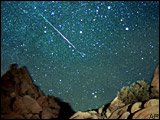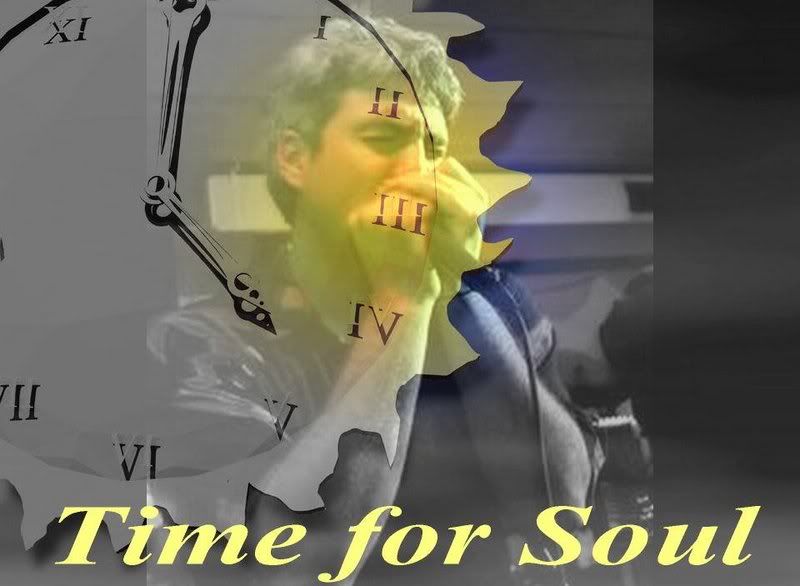Watch for the Perseid Meteors Aug. 11-13

Watch for the Perseid Meteors Aug. 11-13
A 'Shooting Star' Every Few Minutes

This chart shows how the Perseids might appear to a person looking northeast at 11PM local time in mid-August. The meteors will appear to radiate from the constellation Perseus, from which they get their name.
(Aug. 7) - The Perseid meteor shower, an annual celestial event beloved by millions of skywatchers around the world, returns to the night sky this coming week. But moonlight will interfere somewhat with the view.Sky & Telescope magazine predicts that the Perseid shower will reach its peak late on Friday and Saturday nights, August 11-12 and 12-13 (for viewers in North America). The rate of activity should pick up after midnight until the first light of dawn.You'll need no equipment but your eyes. The moonlight in the sky will hide the fainter meteors, and so will artificial light pollution, but the brightest meteors should still show through.Find a dark spot with a wide-open view of the sky. Bring a reclining lawn chair and a sleeping bag; the bag not only provides warmth against the late-night chill but also serves as mosquito armor in this era of West Nile virus. Cover your remaining exposed parts (including hair and clothing) with an effective mosquito repellent.
Meteors are caused by pebble-sized comet debris burning up in the atmosphere. Watch Video:MeteorsLearn More:Basics of Meteor ObservingMeteor PrimerTouring the August SkySpace News and PhotosGet Skywatcher Alerts:Sign Me Up
"Go out after about 11 or midnight or so, lie back, and gaze up at the stars," says Sky & Telescope senior editor Alan MacRobert. "Relax, be patient, keep the Moon out of sight, and let your eyes adapt to the dark. With a little luck you'll see a 'shooting star' every few minutes on average."
Talk About It
Will you be wtching the sky this month?
Post a Message
Alert Me to Sky Watching Events
Perseids can appear anywhere and everywhere in the sky. So the best direction to watch is wherever your sky is darkest. Faint Perseids appear as tiny, quick streaks. Occasional brighter ones may sail across the heavens for several seconds and leave a brief train of glowing smoke.If you trace each meteor's direction of flight backward far enough across the sky, you'll find that this imaginary line crosses a spot in the constellation Perseus, near Cassiopeia. This is the shower's radiant, the perspective point from which all the Perseids would appear to come if you could see them approaching from the far distance. The radiant is low in the north-northeast before midnight and rises higher in the northeast during the early-morning hours.Don't give up if it's cloudy on the peak nights. The shower lasts for about two weeks, with fairly good rates in the predawn hours of August 10 through 15. (The radiant is always low or below the horizon for Southern Hemisphere countries like Australia, New Zealand, and South Africa; therefore few if any Perseids can ever be seen from these regions.)The Perseid meteoroids are tiny, sand- to pea-size bits of rocky debris that were shed long ago by Comet Swift-Tuttle. This comet, like others, is slowly disintegrating as it orbits the Sun. Over the centuries, its crumbly remains have spread all along its 130-year orbit to form a sparse "river of rubble" hundreds of millions of miles long.Earth's own path around the Sun carries us through this stream of particles every mid-August. The particles, or meteoroids, are traveling 37 miles per second with respect to Earth at the place where we encounter them. So when one of them strikes the upper atmosphere (about 80 miles up), it creates a quick, white-hot streak of superheated air.For several years in the early 1990s the Perseids performed spectacularly, flaring with outbursts of up to hundreds of meteors visible per hour. The rubble streams responsible for these outbursts were probably shed during Comet Swift-Tuttle's swing by the Sun in 1862. In recent years, though, the shower has returned to normal.
Night Sky Tour Audio Podcast: August
In this month's tour, Night Sky editor Kelly Beatty helps you find Jupiter and the Summer Triangle -- and he previews the Perseids.Listen to August TourSubscribe to PodcastDirections: How to Subscribe
More about the Perseids and how to watch them -- including how to make a scientific meteor count and where to report it -- appears in the August 2006 issue of Sky & Telescope magazine
2006-08-07 17:33:18
Also From Sky & Telescope
This Week's Sky at a Glance
Sky & Telescope Site
Shop at Sky
Astronomy Basics
How to Start Right in Astronomy
Words Ya Gotta Know
Using a Naked-Eye Star Map
Full Archive of Astronomy Articles
How to Buy a Telescope
Learn about the different types of telescopes and find the one that matches your observing style -- and your wallet.
Full Story, Buying Guide
Watch Video Tips
AOL Shopping: Look for Telescopes
Space Watch
Get night sky guides, plus news, photos and videos.
Space News & Features
View Space Photos
Watch Space Videos
Get Alerts
Get notified via e-mail about notable sky watching events, such as eclipses and meteor showers.
Alert Me
Add Events to AOL Calendar










































0 Comments:
Post a Comment
<< Home